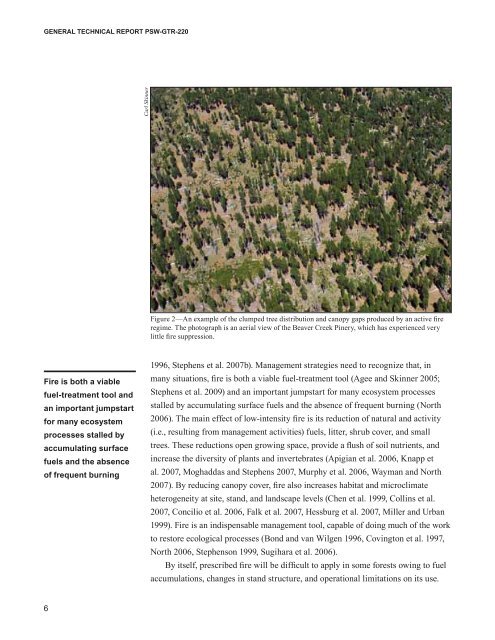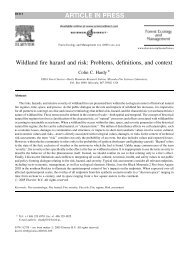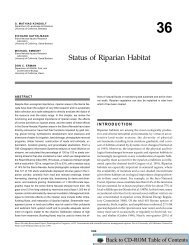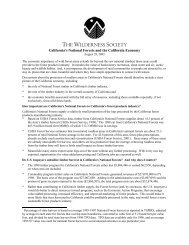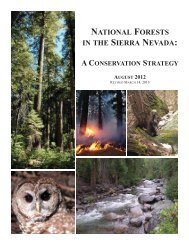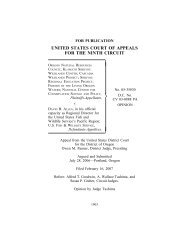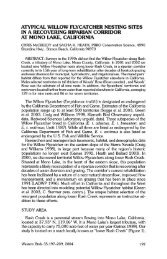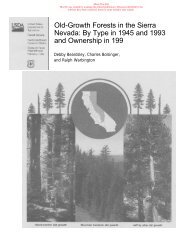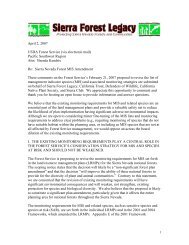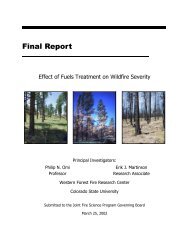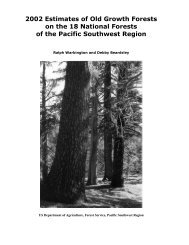An Ecosystem Management Strategy for Sierran Mixed-Conifer Forests
An Ecosystem Management Strategy for Sierran Mixed-Conifer Forests
An Ecosystem Management Strategy for Sierran Mixed-Conifer Forests
You also want an ePaper? Increase the reach of your titles
YUMPU automatically turns print PDFs into web optimized ePapers that Google loves.
GENERAL TECHNICAL REPORT PSW-GTR-220<br />
Carl Skinner<br />
Figure 2—<strong>An</strong> example of the clumped tree distribution and canopy gaps produced by an active fire<br />
regime. The photograph is an aerial view of the Beaver Creek Pinery, which has experienced very<br />
little fire suppression.<br />
Fire is both a viable<br />
fuel-treatment tool and<br />
an important jumpstart<br />
<strong>for</strong> many ecosystem<br />
processes stalled by<br />
accumulating surface<br />
fuels and the absence<br />
of frequent burning<br />
1996, Stephens et al. 2007b). <strong>Management</strong> strategies need to recognize that, in<br />
many situations, fire is both a viable fuel-treatment tool (Agee and Skinner 2005;<br />
Stephens et al. 2009) and an important jumpstart <strong>for</strong> many ecosystem processes<br />
stalled by accumulating surface fuels and the absence of frequent burning (North<br />
2006). The main effect of low-intensity fire is its reduction of natural and activity<br />
(i.e., resulting from management activities) fuels, litter, shrub cover, and small<br />
trees. These reductions open growing space, provide a flush of soil nutrients, and<br />
increase the diversity of plants and invertebrates (Apigian et al. 2006, Knapp et<br />
al. 2007, Moghaddas and Stephens 2007, Murphy et al. 2006, Wayman and North<br />
2007). By reducing canopy cover, fire also increases habitat and microclimate<br />
heterogeneity at site, stand, and landscape levels (Chen et al. 1999, Collins et al.<br />
2007, Concilio et al. 2006, Falk et al. 2007, Hessburg et al. 2007, Miller and Urban<br />
1999). Fire is an indispensable management tool, capable of doing much of the work<br />
to restore ecological processes (Bond and van Wilgen 1996, Covington et al. 1997,<br />
North 2006, Stephenson 1999, Sugihara et al. 2006).<br />
By itself, prescribed fire will be difficult to apply in some <strong>for</strong>ests owing to fuel<br />
accumulations, changes in stand structure, and operational limitations on its use.<br />
6


